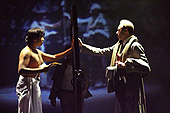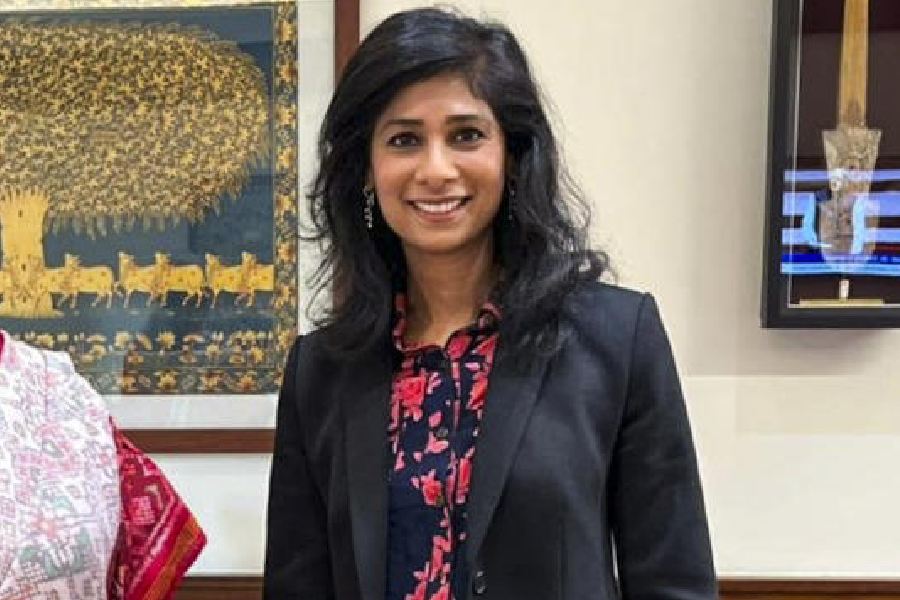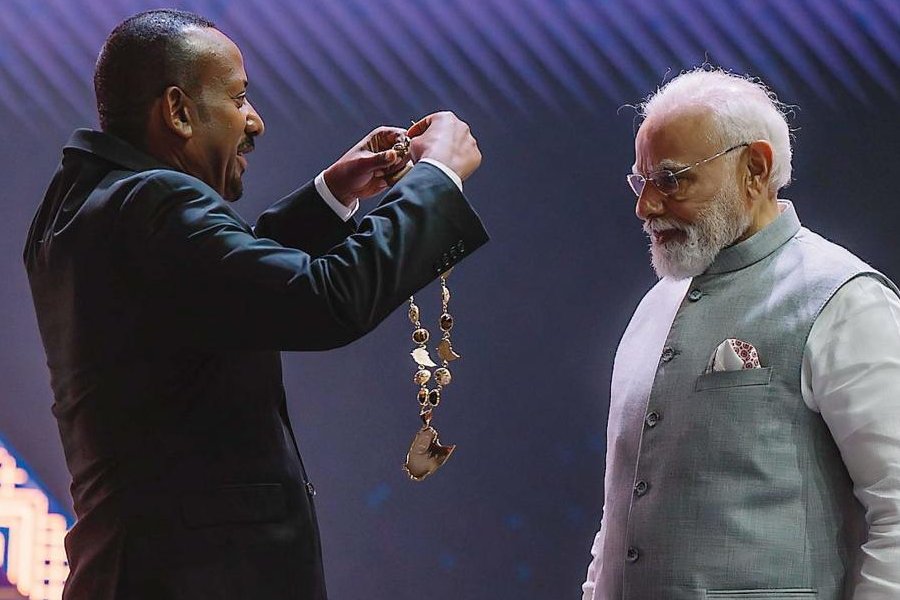 |
 |
 |
| MATH MINDS: (Top) Shane Shambhu as S. Ramanujan and David Annen as Godfrey Hardy in the play A Disappearing Number; (centre) Ramanujan; Annen in another scene from the play |
Going to see a new play last week at the Barbican Arts Centre in London called A Disappearing Number, based on the 1913-19 collaboration between the two great mathematicians, Srinivasa Ramanujan Iyengar of India and Godfrey Harold Hardy of England, reminded me of the occasion in 1998 when I had driven to Cambridge to interview Amartya Sen immediately after his landmark appointment as Master of Trinity. During the tour of the college, Sen waved at the rooms Ramanujan had occupied when the latter had arrived in 1913 after having been persuaded to do so by Hardy, the greatest English mathematician of his age.
From Madras, where Ramanujan was a humble clerk in the port trust and essentially a self-taught mathematician, he had posted a letter to Hardy, which had contained enough equations to convince the Englishman that the writer was someone worthy of being brought over to Cambridge. Later, long after Ramanujan had returned to India in 1919 — he died the following year at the age of only 32 — Hardy would be big enough to tell an interviewer that discovering Ramanujan was “the only romantic incident of my life”.
I asked Sen about a story which had always intrigued me: Ramanujan’s explanation to Hardy and to others that he was able to write down his amazingly complicated number theories because Goddess Namagiri would appear to him in his dreams with the solutions.
Sen responded cheerfully that as an atheist, he had no truck with such nonsense. “As Master, I have a pew in Trinity College Chapel which I occupy. I go there on Sunday because this is expected. But it has nothing to do with God. Ramanujan’s mathematics had nothing to do with God.”
But Simon McBurney, who has conceived and written A Disappearing Number, appears not to have dismissed the divine dimension in Ramanujan’s work quite as easily as Sen. While doing research for his play, McBurney, a founder and artistic director of the UK theatre company known as Complicite, flew to India and examined Ramanujan’s notebooks at the Madras University library.
“Of course, I went to Chennai and then went to Kumbakonam, that is where Ramanujan grew up,” says McBurney. “I also went to Namakkal where there is a great temple to the Goddess Namagiri,” he says. “He spent three days and three nights there before coming to Cambridge because he was a Brahmin and not allowed to cross the water. He had a vision but the majority of his family still rejected him (when Ramanujan returned).”
On the night I went to see the play, the audience at the Barbican was largely English, though it has apparently attracted more of a mixed crowd for other performances. McBurney’s ambition is to take A Disappearing Number on tour and if that is achieved there is bound to be something of a revival of interest in Ramanujan. As it is, a couple of movies on Ramanujan might be made and Bloomsbury has just published a fictionalised account of the Ramanujan-Hardy encounter, The Indian Clerk, by David Leavitt, an American author. The classic source remains The Man Who Knew Infinity: A Life of the Genius Ramanujan by Robert Kanigel.
Although all this is a matter of pride for India, Ramanujan now appears to belong to the world and to the fraternity of mathematicians. A world tour is in prospect, says McBurney. “We have many invitations, (from) south-east Asia, Japan, Europe; there are many, many places in the world I would like to take it to. It is a dream for me if it could actually go to Chennai.”
The best bits of the play, many will feel, are the aspects dealing with the encounter between Hardy and Ramanujan. Although this anecdote has been told a million times before, it is still good fun to hear Hardy’s comment when visiting Ramanujan in hospital that his taxi number — 1729 — is very uninteresting, whereupon the south Indian points out that, on the contrary, it is the smallest number that can be expressed as the sum of two cubes in two different ways (1 cubed plus 12 cubed or nine cubed added to 10 cubed).
McBurney has taken the Hardy-Ramanujan story and run it alongside the imaginary love affair of an American man (of Indian origin) and an English woman mathematician so that the two plots become interwoven. This is an innovative theatrical device but it can be challenging, certainly to a new generation of Indians who find, say, Shah Rukh Khan’s Don intellectually stimulating.
Despite one review that touched on Hardy’s homosexuality, there is nothing overt in the play. As McBurney points out: “Hardy’s sexuality was extremely discreet and largely unfulfilled. But he genuinely loved Ramanujan but in a different way — and that comes across in the play.” Hardy (played with impressive English stiffness but also sympathetically by David Annen) “was a man of great integrity in the sense he recognised the quality of Ramanujan’s mathematics”.
At a time when his fellow mathematicians had objected to the elevation of a “black man” (the racism might have provoked Ramanujan’s depression and suicide attempt), it was Hardy who had championed the election of the Indian as a Fellow of the Royal Society and later as a Fellow of Trinity. “It did not matter to Hardy what colour anybody was, if the mathematics was good,” argues McBurney.
He modestly asserts that he was educated by his Asian actors, but 30-year-old Shane Shambhu, who was born in the East End of London of parents from Kerala and who looks a very Madrasi Brahmin when he dons a wig to play Ramanujan, reflects just how inspired the cast feels. “Strangely, I did get involved in the mathematics,” says Shambhu. “We did a lot of mathematical workshops throughout the creation period.”
Theatre at this level in England is taken very seriously. For example, Shambhu’s script on his dressing room table had mathematical scribbles, evidence that the actor was trying to get into the mood to deal with Ramanujan’s partition theory and mock theta functions.
But there is nothing mock about Shambhu’s emotions and the searching questions he has been asking himself: “For me, it’s about his passion for mathematics and even though it was actually forbidden for him to go abroad, he still took that step and came here. It was a courageous step. A play like this draws out lots of elements. It is a question I constantly seem to ask myself — where do I belong? Ramanujan makes me want to do the same thing with my work, which is dance and theatre. I am proud he is Indian. It really needs to be seen in India.”










